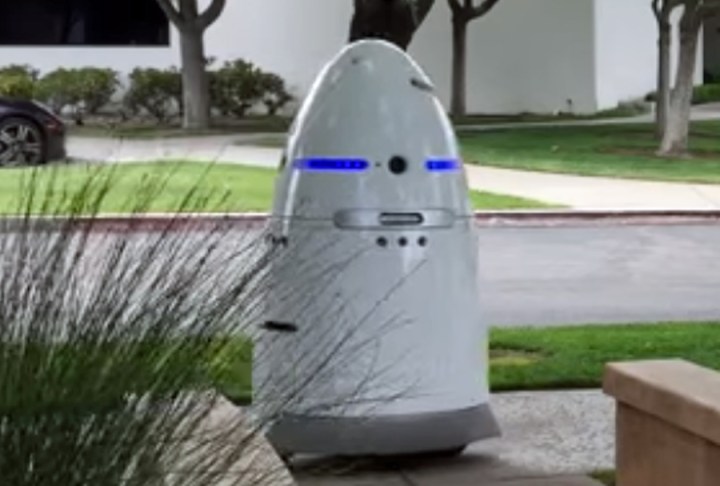
Silicon Valley startup Knightscope, Inc. has two mobile surveillance and security robots, called the K3 and K5. The company refers to them as Autonomous Data Machines, or ADMs, because as the robots make their rounds, they can either follow prescribed paths or just wander within a determined area. While on the move, the robots continuously collect and transmit more than 90 terabytes of data per year.
Knightscope maintains a security center to monitor and receive alerts and status reports from the robots and, over time, a growing database of information collected by sensors will help the robots differentiate between normal activity and security issues. The robots are physically imposing, especially the K5 model, which is 5 feet tall, 3 feet wide, and tips the scale at 300 pounds.
Savioke is another Silicon Valley company in the robotics business. Savioke’s Relay, also called the Botlr, is designed for service use in hotels. The primary Botlr application is to make deliveries to guests. The Botlr starts off at a designated charging station. When hotel staff get a call for convenience or snack items, for example, they enter a code to open the Botlr’s top compartment, enter the room number, and the robot travels on its own to deliver the items to the specified room. The Botlr can also deliver small packages. According to Savioke, Botlrs are currently in service in eight hotels.
Starship Technologies, an Estonia company with an office in London, makes six-wheeled urban delivery robots that resemble canister vacuums or the kind of cooler you might take to the beach. According to the MIT Technology Review, Starship robots have already traveled more than 3,200 miles in Arkansas, London, Estonia, and the San Francisco Bay Area. The Starship has 9 cameras that help it navigate along sidewalks. A lockable storage compartment is accessed ahead of time by the recipient with a code sent via text message.
Target Stores are also trying robots, in this case for taking store inventory. San Francisco startup Simbe Robotics builds the Tally, described as an automated shelf auditing and analytics solution. The Tally, which looks like a tall space heater or high-end audio speaker, rolls up and down store aisles. According to Simbe, the bot can complete an inventory of the shelves in a medium-sized store in about 30 minutes with 95 percent accuracy. The company says the same inventory would take humans about 25 hours with only a 65 percent accuracy rate. The Tally can also report all misplaced merchandise so store personnel can retrieve and re-shelve it properly.
As robots become more common, their successful co-existence with humans will depend on their appearance and behavior. The ability to navigate inert and moving objects autonomously and safely is a huge first step.
The way robots appear is often determined by the application. A roving security robot can look imposing, while an inventory machine needs to be unobstrusive as it shares aisles with shoppers. A delivery robot, whether traveling to your hotel room, home, or place of business, has to be a convenient size for you to retrieve the contents.
That robots may someday replace humans entirely in these jobs is another issue, but one that is already an emerging reality with the machines in the MIT Technology Review study.
Editors' Recommendations
- Amazing Atlas robot shows it’s almost ready for work
- Honda shows off plans for eVTOL aircraft and telepresence robot
- Rocket Lab shows off Rosie, its rocket-building robot
- Watch Boston Dynamics’ robots strut their stuff in year-end dance show
- MIT’s clever robotic basketball hoop will help you level up your game




